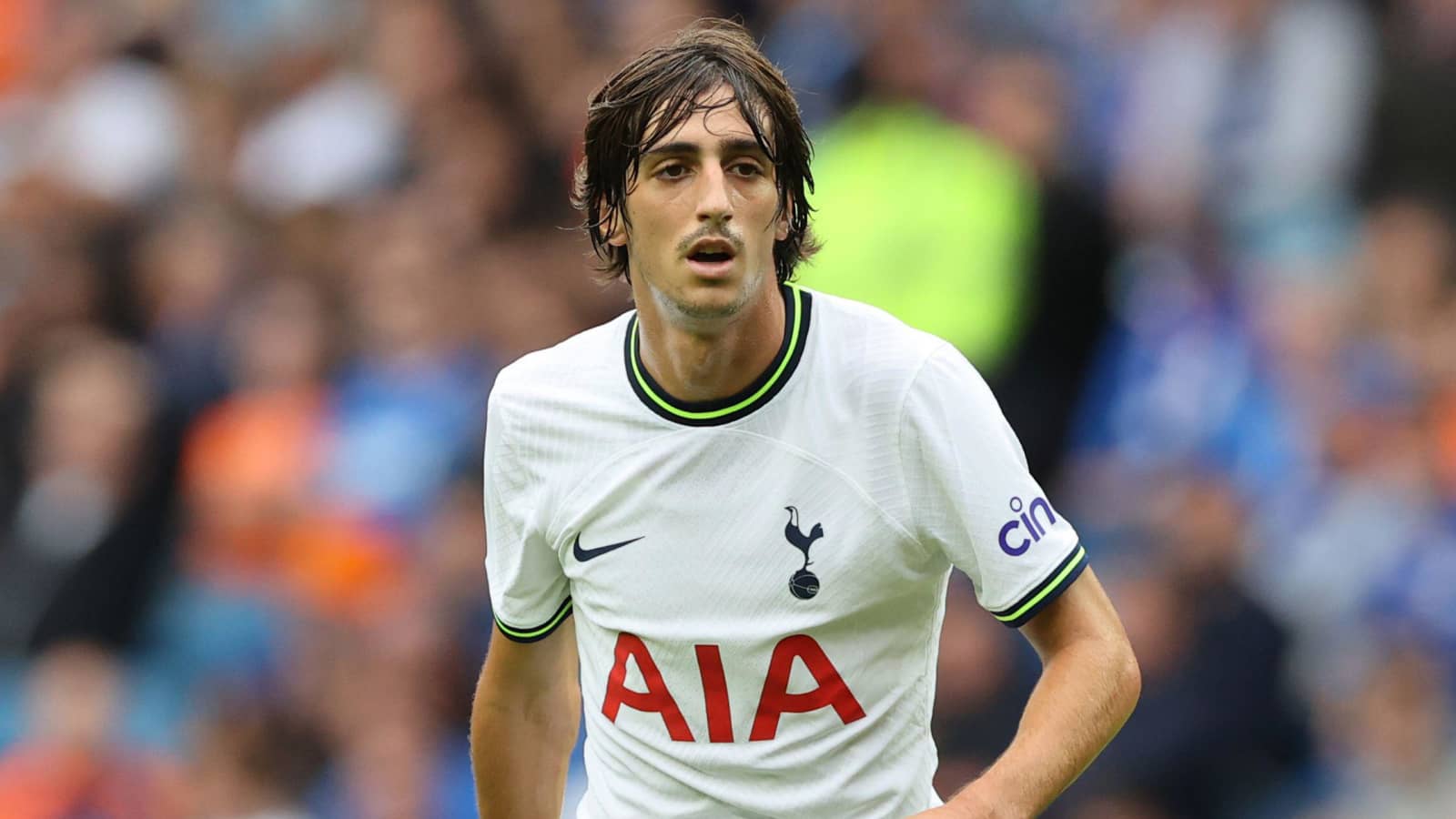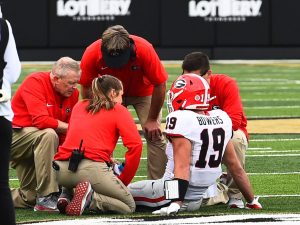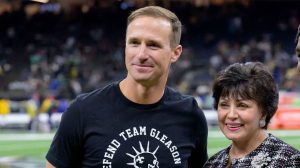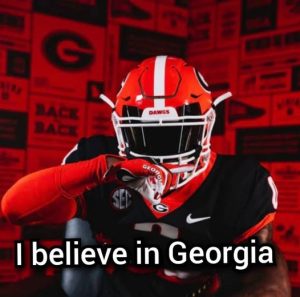
78 minutes in the life (and near death) of Fabrice Muamba
It didn’t take long, in Muamba’s case, for the CPR to be administered. According to Amy Lawrence, who had been covering the match for the Observer, the reason everyone knew something was wrong was that Muamba, though out of the current run of play, suddenly “fell like a tree trunk. He didn’t put his arms out to break his fall, or anything, he just dropped.” It was seconds before other players noticed. Rafael van der Vaart, a Spurs player, was the first to do so, and frantic signalling to the pitchside medical teams brought on the men in green.
Spurs had five fully medically trained assistants pitchside that day, and there was, as ever, aid from the St John Ambulance unit. It was a far cry from 2006, when Chelsea goalkeeper Petr Cech fractured his skull playing against Reading. He had to crawl off the pitch by himself and wait for an ambulance: the resultant outcry saw standards of medical pitchside preparation improved to their current high standards.
“The medical issues and the structure has changed for the better,” Cech said last week. “[Fabrice] still has a chance to survive because of all the equipment around the pitch. It’s a great change because sometimes it takes only a few seconds to change a whole life and a whole career.”
Muamba began to get, if we can call it that, lucky. Instantly given oxygen and professional CPR, his chances were already raised. The CPR is the main thing, although oxygen certainly helps, a priority recognised in the recent British Heart Foundation television advert featuring player-turned-actor Vinnie Jones, which makes a point of ignoring the kiss of life.
I asked the foundation why it had apparently changed its stance after school generations had been taught, on dummies, to both breathe and push. “The kiss of life helps if possible, but it’s not a priority,” said a spokesman. “And, if people haven’t been trained, sometimes they’ll stand back, afraid they’ll mess it up – our message is simply that it’s better to get in and start CPR, rather than worrying about co-ordinating all that with mouth-to-mouth and somehow getting it wrong.”
So push-down CPR is now the official priority, but do not kid yourself it is not hard work – you need to make thrusts of at least 5cm downwards, repeated at a rhythm of 80 a minute. The Vinnie Jones advert features the Bee Gees’ hit Staying Alive, which might be a dodgy record but is a perfect rhythmic touchstone.
What was happening to Muamba at this time, according to Professor Sanjay Sharma, a cardiology specialist at St George’s University Hospital, London, was “ventricular fibrillation. Rapid chaotic electrical activity within the heart. It means the heart stops its usual pumping function; good oxygenated blood should be pumping from the left ventricle, coming back to the right, but suddenly it’s not. Which, after a short while, is not usually compatible with life.” But Muamba continued to get luckier. Sitting in the stand that day with his brothers was Spurs fan Dr Andrew Deaner, consultant cardiologist at the London Chest Hospital. “I noticed that Fabrice Muamba had collapsed and I saw people running on and starting CPR,” he said. “I turned to my brothers and said ‘I should help’ and they agreed.” In another piece of luck, he was allowed on the pitch: stewards can be tough, but Deaner, after arguing briefly with two young men who “didn’t want to know”, found an older steward whom he knew and persuaded him to give him access. As soon as he arrived on the pitch, Deaner “could see they were doing very good CPR. They had the defib ready.”
Muamba was given 15 defibrillation shocks in all: two on the pitch, one in the tunnel, 12 in the ambulance. CPR is fine, apparently, for manually persuading the body to pump oxygen around for a bit, but the heart needs to be jump-started with a 300-joule electric shock. In total, Muamba was to take 4,500 joules in those 78 minutes.
As he entered the tunnel, the crowd finally fell silent. According to Lawrence, there had been “a groundswell, a primal roar, chanting Fabrice’s name. The Tottenham fans joined in. They chanted his name and then they started chanting, ‘Come on!’ It was like there was a compulsion to encourage him to get up, wake up. But he was carried off and a kind of hush descended.”
18.19-19.01
THE TUNNEL/AMBULANCE
According to Sharma, this is where something remarkable must have taken place, thanks to the presence of Deaner, the fan who half an hour previously had been simply watching a match with his brothers. There was a squad of medical experts and friends there already. Spurs’s club doctor, Shabaaz Mughal; and paramedics Peter Fischer and Wayne Diesel, who had been so involved in the first six minutes: and Bolton physio Andy Mitchell and club doctor Jonathan Tobin, a personal friend of Muamba.
Sharma told the Observer that the decision to take Muamba to the London Chest Hospital in Bethnal Green – almost eight miles away – rather than, as had been planned, the North Middlesex, much nearer White Hart Lane, may have helped to save the footballer’s life. “I can only imagine that it was down to Dr Deaner, because he worked there, and knew that Muamba needed the specialist equipment at Bethnal Green. The amazing thing is that he persuaded the ambulance to change plans: ambulancemen don’t normally like to do that. But it was vital, I think. Bethnal Green has equipment which can make a great difference. Ambulances don’t have them, and the other hospital wouldn’t have.”
It was a difficult journey through north London. One of the vehicle’s paramedics apparently had to hold the waist of Bolton’s doctor, Tobin, while he fought to administer available drugs to available veins, because the pitchside doctor still had on his football boots, and studs slip on metal.
A further 12 defibs were carried out during the journey. “It’s a remarkable amount of work to be done on a body in such a time, and a remarkable body to have taken it,” Sharma said. “I’m still rather amazed. And thankful that there was so much expertise, and will.
“Even the CPR is hard, can be hard – it’s tiring. It’s physical. Often you have to ask someone to take over. But it’s crucial, in the early minutes – CPR keeps something pumping, and with a lack of oxygen any organ soon starts to die, the heart and brain needing the most, and the quickest.
“The brain is your hard drive. If it’s allowed to conk out, it’s the end. Had this happened to most chaps the survival rate would be 11%. If you get specialist help, as he did, it’s something like 64%.”
Shortly after 7pm, the ambulance slewed around the last corner in Bethnal Green.
HOSPITAL
The London Chest Hospital has teams of cardiologists, brain specialists, and something that they call “intensitists”. Some had been listening to the match on the radio, and wondering whether they might get the call to readiness.
The journey had been six miles longer, on a Saturday teatime, than it might had the ambulance made a routine trip to the North Middlesex, were it not for the intervention of Deaner.
According to him: “We went straight into the lab and I put a bigger line into a vein under his shoulder blade and quickly scrubbed up. We got access to arteries and a bigger vein and carried on giving shocks and drugs.”
Muamba’s team physician, Jonathan Tobin, was suddenly out of the loop. “Once we got to the hospital I was no longer part of the hands-on crew and it was when I took a step back that everything that just happened hit me.” Fabrice Muamba was in the best place possible, perhaps in the whole of Britain, even though he wasn’t to know it.
19.31
HIS HEART STARTS WORKING AGAIN
Against all expectations, Muamba regained consciousness on the Monday after his collapse. He recognised his fiancee, Shauna Magunda, and asked after their son Joshua. Within hours he had talked to a team-mate and expressed dismay to his father that his collapse caused the match to be abandoned. By Tuesday, Muamba was declaring himself “fine”, but he remains in intensive care at the London Chest Hospital and, according to his family, faces a long road to recovery.
Experts say the swift action of medics at the scene undoubtedly helped his chances. Deaner said the London response had been “faultless: one thing after another just went right.” He visited Muamba shortly after his awakening and said he’d been moved to tears at the speed and strength of the player’s recovery.
“I understand you’re a very good footballer,” Deaner whispered into the ear of the stranger he’d helped. He was rather taken by the dry response, the first piece of humour from a grim afternoon. Muamba replied: “I try.”








